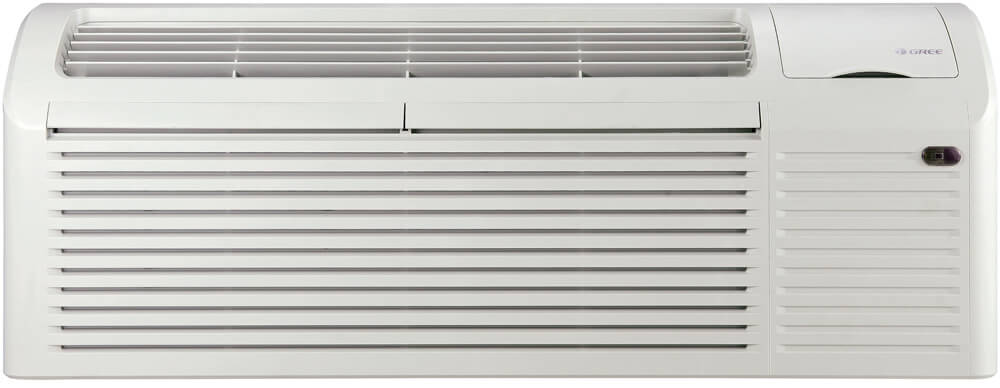Enhancements to packaged terminal air conditioner technology and designs are continuing to help hoteliers increase guest comfort and reduce energy usage. Over the years, PTACs have evolved from a cheap alternative that could heat or cool a space to highly efficient machines, all while still maintaining the cost benefits and ease of maintenance associated with the units.
“The efficiencies have not only improved on the cooling side but also on the heating side,” said Sabby Sabharwal, Friedrich’s product manager of specialty products. “The heat pump units offer a coefficient of performance of up to 3.6, helping save big on operational costs.”
Units also have become more efficient and are more quiet through design enhancements, said Douglas Mackemer, director of parts, supplies and specialized equipment at Carrier Enterprise.
“I also think there is a greater awareness of the correlation between unit maintenance and equipment performance, longevity and guest comfort as well,” he said.
Sabharwal agreed—not only is there more recognition that the units work better when properly maintained, but the PTACs are becoming more service-friendly. This allows hotel staff to easily make repairs quickly.
There is a new, two-motor design with separate motors for the indoor blower and the outdoor fan that has helped tremendously in making the PTAC units much quieter, Sabharwal said. The insulated indoor-outdoor partition compartment on the Friedrich PTAC units further helps in better sound attenuation.
Occupancy-sensing energy-management thermostats with built-in occupancy sensors are also helping efficiency. When rooms are unoccupied, these thermostats automatically adjust the temperature to eliminate unnecessary heating and air-conditioning, helping realize huge savings on the electricity bills, Sabharwal said.
A remote management website allows monitoring and configuring of these energy-management thermostats from any computer, tablet or smartphone connected to the internet. Wireless control offers more flexibility and ease of use for hoteliers, said Matt Conant, national sales manager air conditioning products at ECR International.
Looking to the future, the experts anticipate more of the same advancements improving PTACs. The enhancements will lead to greater guest comfort, experience and satisfaction. Conant said while variable speed compressors are already present in PTACs, he expects the technology to advance considerably within the next five years. He also expects advanced control features such as occupancy sensors to further advance PTAC technology as well.
“We will not only find ways to further improve the operational efficiencies of the units but we also can add features that will enhance the overall value of the product category,” Sabharwal said.
What to look for when buying PTACs
Hoteliers should look for several things when purchasing new PTAC units. The experts agree that there are six key factors when making the decision to buy a PTAC.
Efficiency
New PTAC models are much more energy efficient than outdated ones. With room heating and cooling costs contributing as much as 70 percent of a property’s energy costs, hoteliers should choose models with a high efficiency rating to lower those costs.
Noise level
Look for units with low operating noise levels and with high sound insulation, represented by high sound transmission class and high outdoor-indoor transmission class ratings.
Technology
Two-fan systems, drain kits and remote thermostats are all technological advances that hoteliers should consider when purchasing units.
Reliability
The most important thing about a PTAC is that it runs consistently. An unreliable unit can result in a room not functioning, which means lost revenue.
Maintenance
PTACs should be properly maintain to run smoothly and new models make preventative maintenance tasks even easier. The experts suggest looking for features like easy air filter access, quick connect power cords,, and universal heaters.
Product support
The experts also agree that product support from the manufacturer is key if needed. How quickly can the manufacturer respond to any product issues? A non-working unit means lost revenue. “Are you really getting what you want from that company?” asked Conant.
Day-to-day operations improved with new technology

First and foremost, it is important that the hoteliers select an efficient, reliable and durable product to start with. A reliable and durable product would mean fewer hassles maintaining the unit, Sabharwal said. A third-party (Air-Conditioning, Heating, and Refrigeration Institute) certified unit should instill confidence in the operational efficiencies of the unit.
Interfacing the units within property-management systems provides control of equipment. It also gives feedback of equipment operation and performance efficiency, Mackemer said. “Notification of poor-performing equipment and notification of issues to maintenance and management before the guests even know there might be a performance issue,” he said.
Conant agreed. “It is key to see how efficient the equipment is operating and to foresee any potential problems,” he said.
Conant also said PTACs are now even easier to maintain with preventative maintenance. “Every three months to twice a year, the equipment needs to be taken out and cleaned,” he said.
“I’ve seen four-year PTACs that look worse than decade-old PTACs, all because [the decade-old ones] were properly take care of,” Mackemer said. “Proper cleaning and maintenance is crucial.”
The experts also agree that product support from the manufacturer is key if needed. How quickly can the manufacturer respond to any product issues? A non-working unit means lost revenue.
